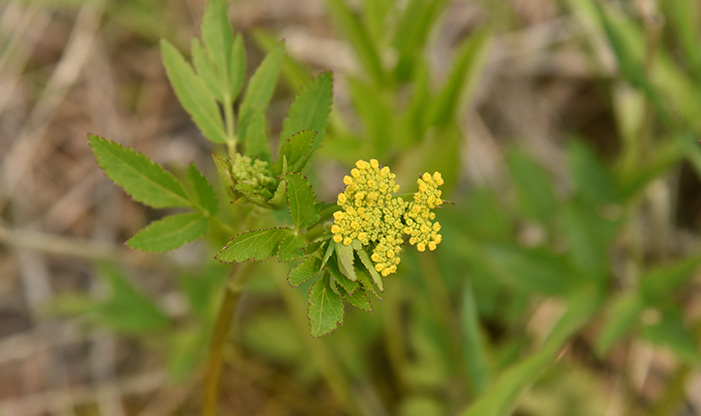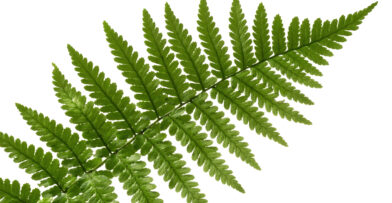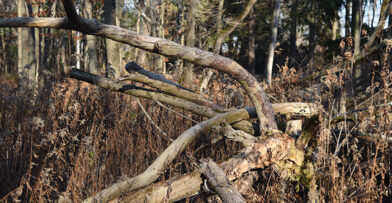A remarkable example of habitat transformation is providing a welcome and stunning visual change at Lake Drive and Brown Deer Road. A beautiful open mix of wetland and meadow now greets all visitors to the Center thanks to removal of the dead and dying ash trees, buckthorn and other invasives that had overtaken this corner of the property.
Continuing restoration will further enhance the ecological significance of this habitat as it evolves into a vibrant and diverse hardwood swamp, a rare habitat type that will fill an important ecological niche for a variety of plant, bird, and animal species.
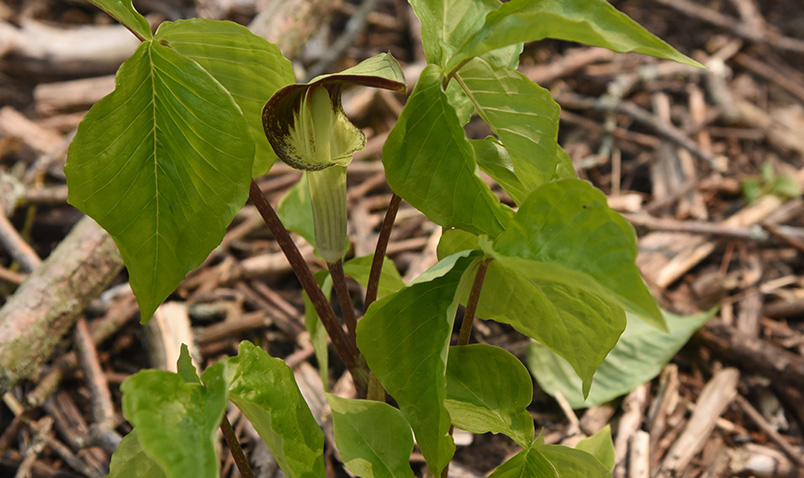
Jack in the Pulpit
Scope of the Hardwood Swamp Restoration Project
This work is a 2.5-acre extension of a 4.1-acre initial hardwood swamp restoration project undertaken from 2020-2022, during which Center staff and volunteers dedicated over 1,600 hours to invasive species control followed by a massive planting of 725 trees, 250 shrubs, and 24,000 herbaceous plugs. Both projects have been made possible by generous grants from the U.S. Fish & Wildlife Service.
In the extended project area, another significant planting effort will begin in fall of 2023 to introduce additional high quality native species characteristic of a hardwood swamp. Staff and volunteers will plant 350 trees, ranging from stately species such as American sycamore to water-loving river birch, and 125 shrubs, including showy species like swamp rose and serviceberry. An ambitious planting of 15,000 native seedlings is planned for 2024.
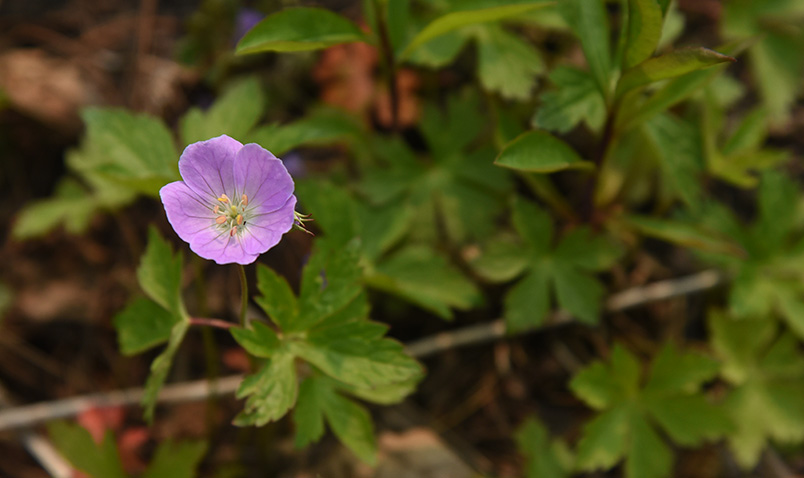
Wild Geranium
The Hardwood Swamp Project and Conservation
The entire hardwood swamp restoration effort is a key part of Schlitz Audubon’s Conservation Plan, a major tenet of which is to conserve and restore wildlife populations of greatest conservation need. Through restoration, the hardwood swamp will become a powerhouse habitat that will provide tremendous benefits to many native plant and animals, including several bioindicator bird species of high ecological interest that rely upon the relatively rare plant assemblages that can be found there. These species, such as Pine Warbler, Wood Thrush, and Northern Flicker, will benefit through the expansion of key food sources, cover, and breeding habitats.
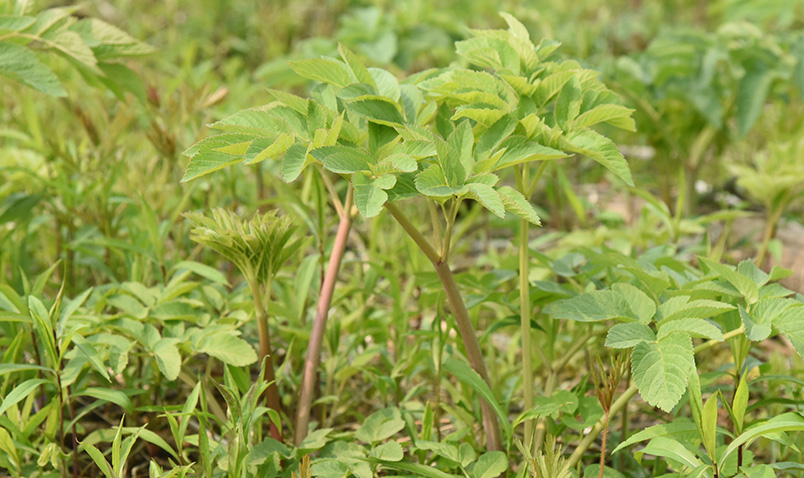
Purple Angelica
Species That Will Benefit
Many pollinators, including the federally endangered rusty patched bumble bee and monarch butterfly, will thrive upon species-specific host plantings such as shrubby St. John’s wort and milkweed. Also of high interest in the hardwood swamp is the creation of summer habitat for Northern long-eared bat, a federally-threatened species. To attract a viable population, several dead and dying trees have been left standing as snags to provide short-term roosting sites until younger trees mature, while the open sedge meadow provides prime foraging habitat. To gauge efficacy of the project on attracting and retaining bats, a forthcoming monitoring station will be erected in the project area to help provide important data on the progress of this focus species.
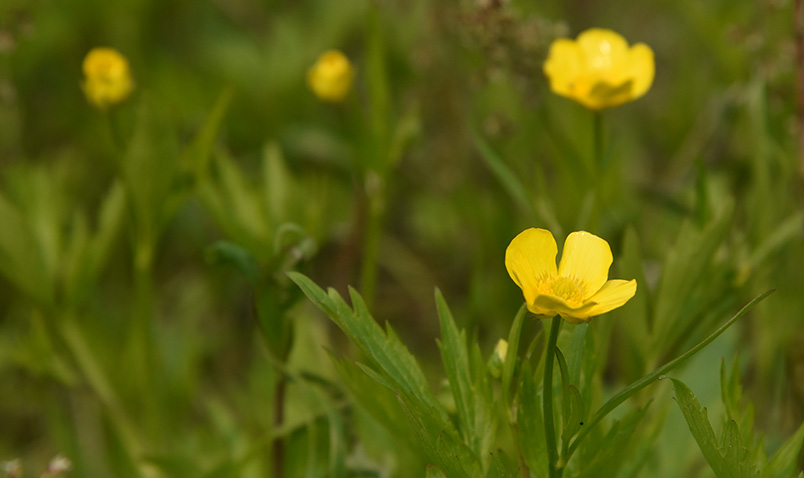
Buttercup
Watch Our Progress!
The current phase of the Hardwood Swamp project will extend through 2024.
- Winter 2022-2023: Buckthorn and other invasive brush cutting
- Spring 2023: Removal of 80% ash (20% to remain as wildlife habitat), and clearing of woody debris to make space for planting
- Fall 2023: Native tree and shrub planting
- Summer / Fall 2024: Native herbaceous seedling planting
Photos by Zoe Finney
